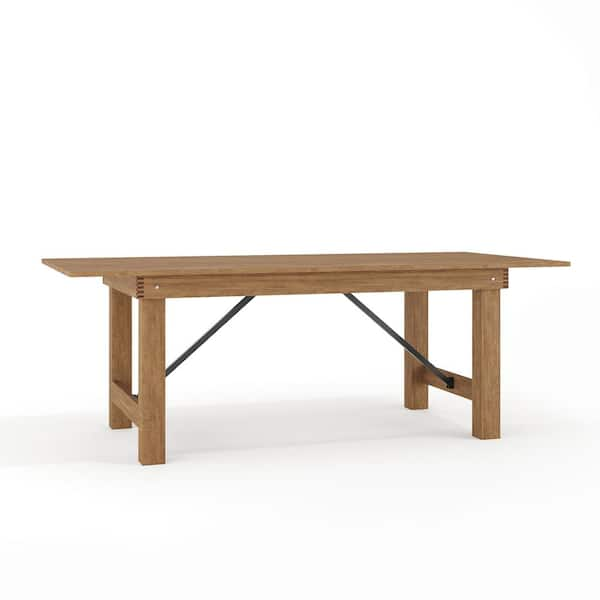Discovering the Various Sorts Of Dining Table Legs Wood for Your Dining Room
The option of dining table legs timber can greatly impact both the functional and visual top qualities of your eating area. Strong wood alternatives, such as oak and walnut, provide a traditional look with unrivaled toughness, while crafted wood choices supply ingenious designs that imitate the richness of natural grains.
Solid Timber Options

Additionally, strong timber is renowned for its strength and long life. Unlike engineered materials, solid timber is less prone to warping and damage gradually when effectively maintained. This makes it an ideal selection for family members or those who often organize celebrations. Each item of solid wood is unique, showcasing private qualities that include to the appeal and character of the eating table.
In addition, solid timber can be finished in countless methods, ranging from all-natural oils to tarnished surfaces, permitting homeowners to individualize their furniture to match their decoration. In summary, picking solid timber for eating table legs not just makes certain structural stability but likewise boosts the visual allure of the eating area, making it a worthwhile investment for any type of home.
Engineered Wood Alternatives

Plywood, constructed from multiple layers of timber veneer, is particularly solid and secure, making it an excellent selection for eating table legs. Its layered structure permits it to hold up against adjustments in humidity and temperature much better than standard strong timber. MDF, on the various other hand, uses a smooth surface for painting or veneering, making it possible for designers to attain a sleek look while preserving architectural integrity.
When picking crafted wood choices, it is essential to take into consideration the designated use and desired visual. These products not just enhance the capability of dining rooms but also permit for higher style flexibility, making sure that modern and conventional designs can coexist harmoniously.
Reclaimed Wood Features
Reclaimed timber supplies an one-of-a-kind mix of sustainability and personality, making it a progressively preferred option for dining table legs. Sourced from old barns, manufacturing facilities, and various other frameworks, reclaimed timber personifies a history that new materials merely can not replicate. Each item brings its own tale, noted by distinct flaws, knots, and varying grain patterns, which contribute to a table's one-of-a-kind visual allure.
In addition to its aesthetic beauty, reclaimed wood is an eco-friendly option. By repurposing formerly utilized materials, it reduces the demand for new lumber, thus helping to minimize and save forests waste. This straightens with an expanding customer choice for sustainable methods in furnishings.
Moreover, recovered wood is typically extra sturdy than freshly gathered wood as a result of its age. The all-natural drying process that reclaimed wood undergoes outcomes in a denser and stronger material, making it much less prone to warping and splitting. This enhances the durability of dining tables, allowing them to withstand the rigors of day-to-day use.
Softwood vs. Wood
When choosing eating table legs, comprehending the distinctions between softwood and site hardwood is crucial for achieving both visual and useful objectives. They usually exhibit an even more rustic appearance, making them suitable for laid-back or country-style eating areas.
On the other hand, woods, sourced from deciduous trees like look these up oak, maple, and cherry, are renowned for their density, stamina, and longevity. The complex grain patterns and abundant colors of hardwoods offer a advanced and ageless allure, making them excellent for official eating settings. While hardwoods tend to be much more expensive and heavier, their strength versus deterioration commonly justifies the investment.
Ultimately, the choice between softwood and hardwood for dining table legs need to straighten with your design vision, use requirements, and budget, ensuring that your eating area shows your personal design while continuing to be practical over time.

Coatings and Therapies
The aesthetic allure and longevity of table legs can be significantly enhanced with different surfaces and treatments. These procedures not only safeguard the wood from damages yet likewise raise its appearance, enabling it to complement diverse indoor designs.
One usual treatment is discoloring, which penetrates the timber and boosts its all-natural grain while including shade. Spots provide an abundant, classy appearance, allowing property owners to match their furnishings with existing style. On the other hand, clear finishes such as polyurethane or varnish create a safety layer without modifying the wood's original tone, making certain durability versus damage.
Furthermore, natural oils, like tung or linseed oil, nurture the wood and provide a refined shine, all while being environmentally friendly. These oils enable the surface area to breathe, preventing dampness accumulation and potential bending.
For those looking for a rustic appeal, distressed or weathered coatings can be applied to create an aged appearance, including character to the piece. Ultimately, the choice of therapies and surfaces depends on individual choice, preferred visual appeals, and the details wood type, making it necessary to take into consideration these factors when choosing dining table legs for your room.
Conclusion
Solid woods, crafted choices, and reclaimed options each offer distinctive advantages, providing to numerous preferences and find this needs. Eventually, the option of wood kind need to straighten with wanted design, resilience, and environmental factors to consider, boosting the overall eating experience.
The selection of eating table legs timber can exceptionally affect both the aesthetic and practical qualities of your eating area - Dining Table Legs Wood. Strong wood options, such as oak and walnut, provide a traditional look with unrivaled toughness, while engineered wood alternatives provide innovative layouts that resemble the splendor of natural grains. Solid timber uses a timeless quality that can boost the overall style of an eating area. Each piece of solid timber is distinct, showcasing private attributes that add to the beauty and character of the dining table
Additionally, reclaimed timber is typically much more durable than freshly gathered timber due to its age.